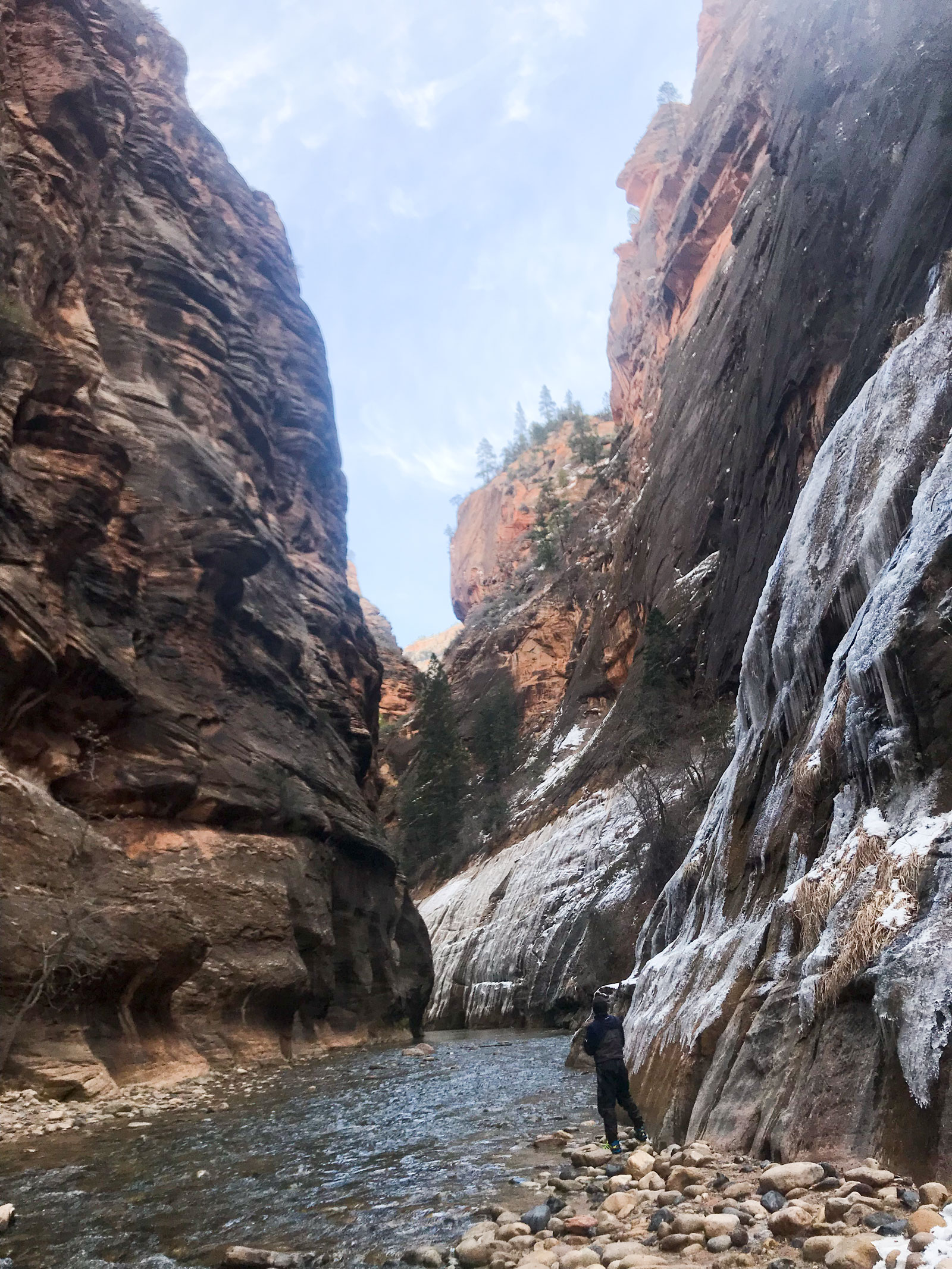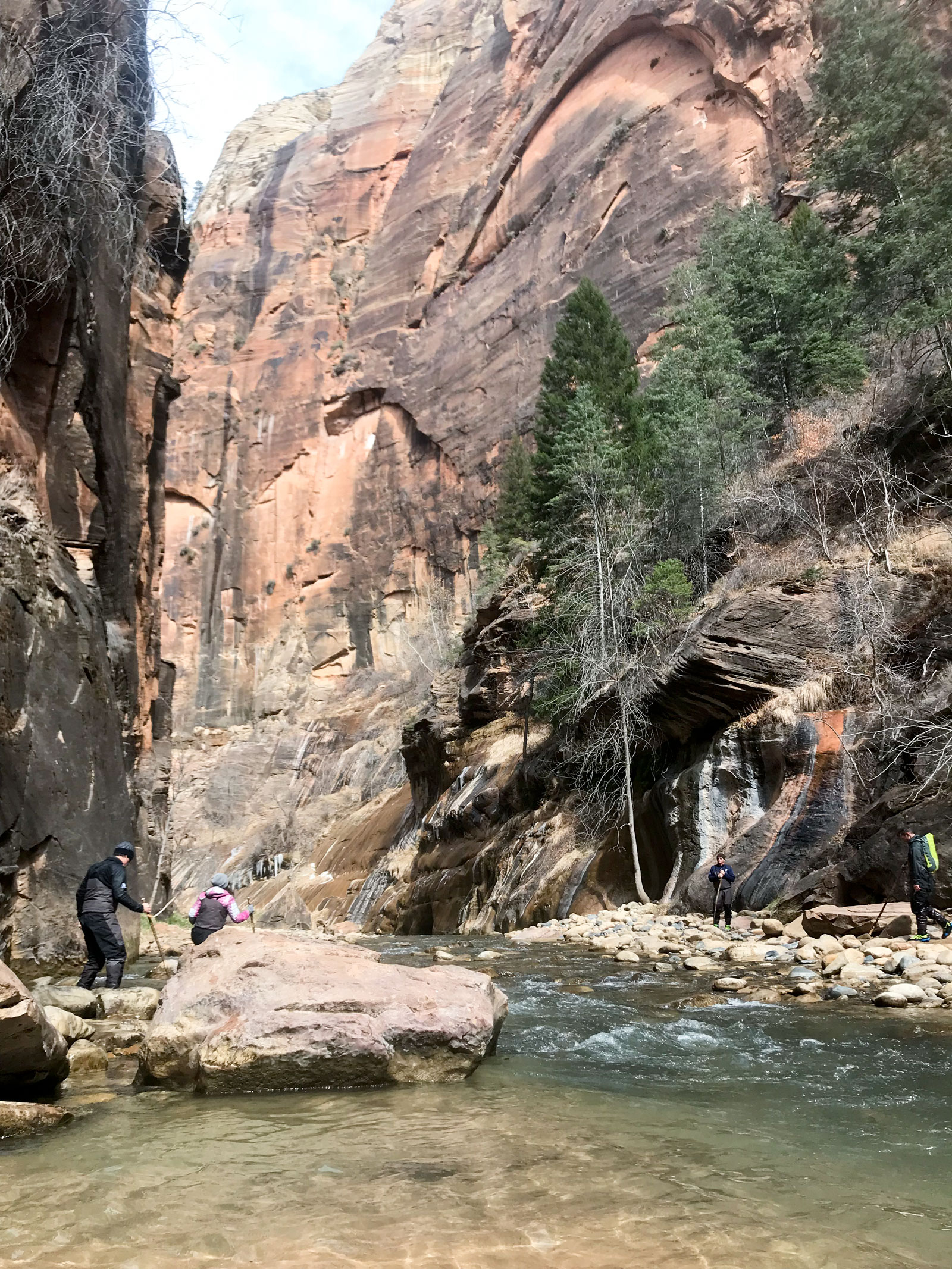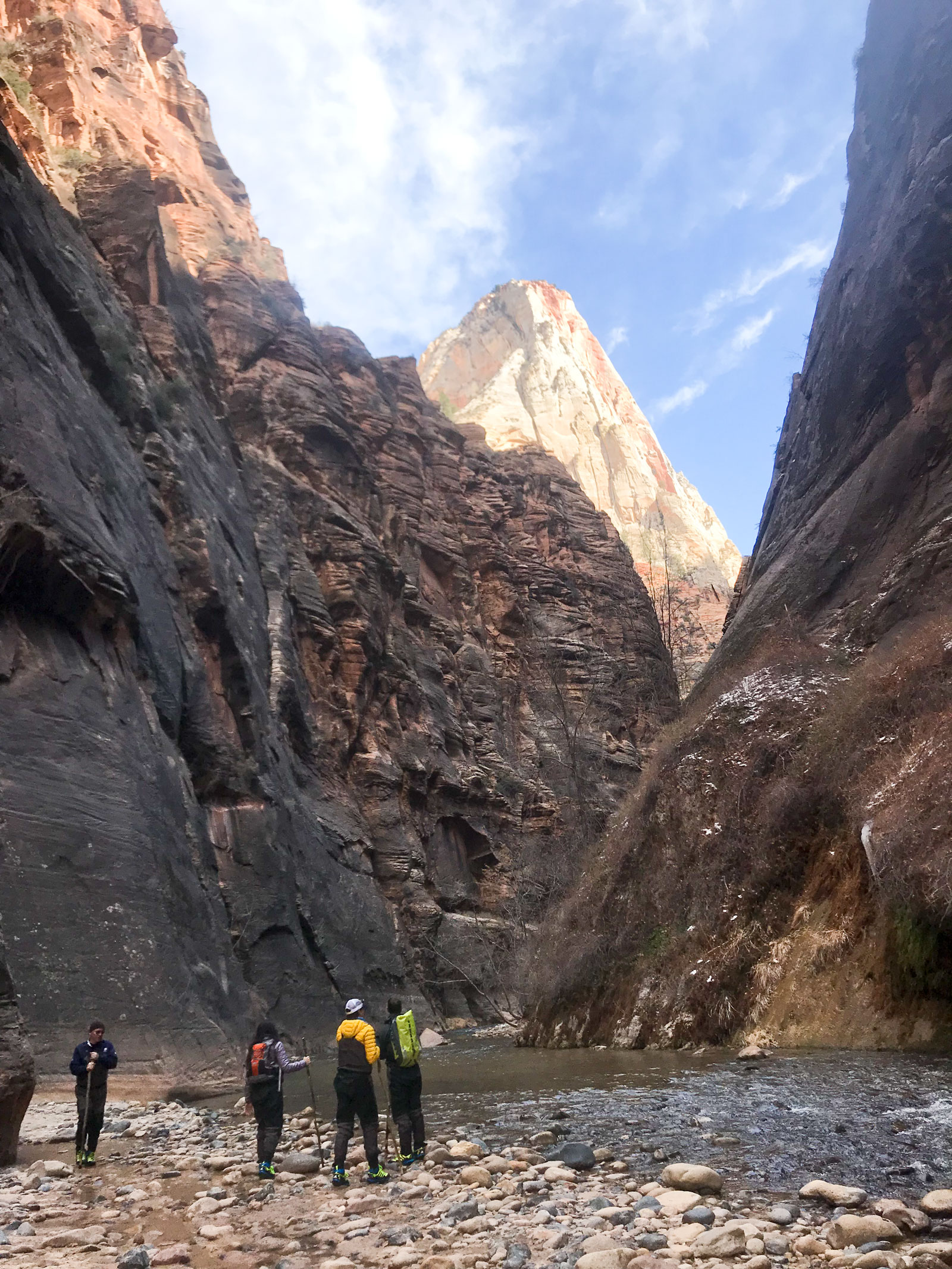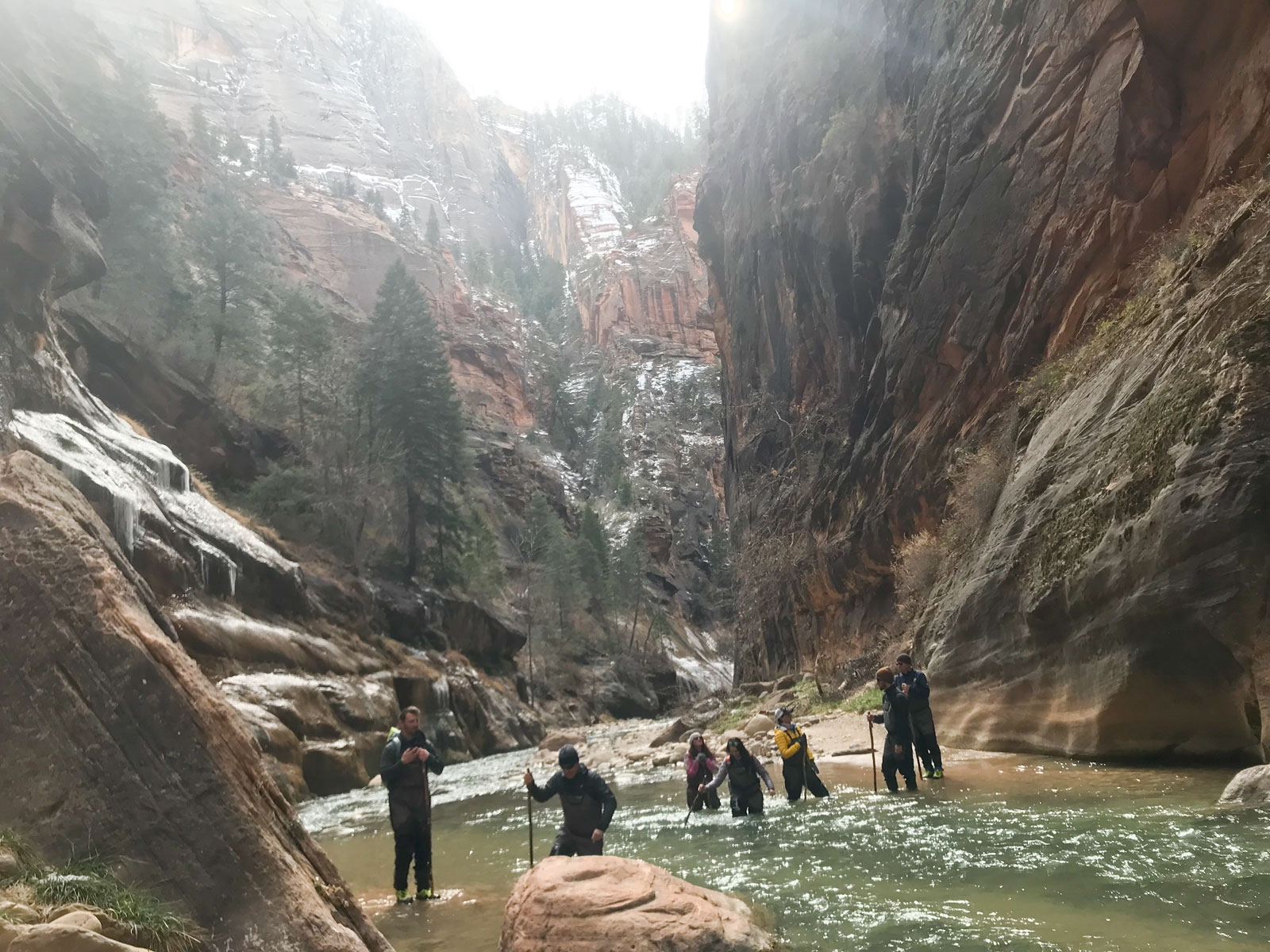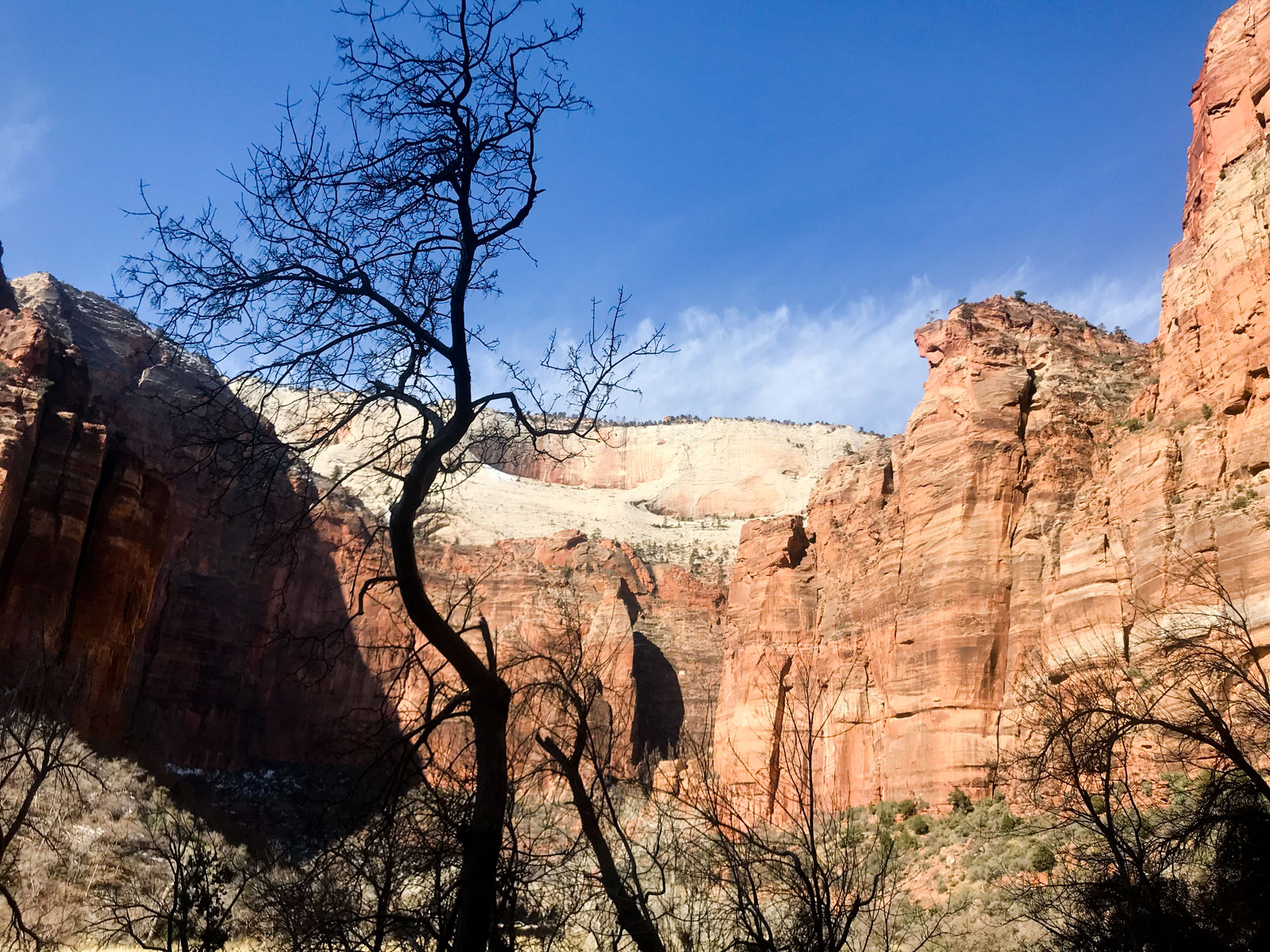The Local newsletter is your free, daily guide to life in Colorado. For locals, by locals.
Length: 10 miles maximum, out-and-back
Difficulty: The Narrows is a choose-your-own challenge type of experience. It can be as easy or as hard as you want; regardless, you’ll be walking through moving water on a slippery riverbed, and appropriate shoes and outerwear are required (more on that below).
Why we love it: You are literally walking up and down a river in a narrow canyon with 1,000-foot-high rock walls looming over you. What’s not to love?
Nearby Nosh: As luck would have it, Zion Canyon Brew Pub lies right at the entrance of the canyon, complete with outdoor patio overlooking the river. Not only can you find a solid lineup of tasty brews (you’ve got to try the Pomegranate Sour), but also hearty comfort food, including stout-glazed meatloaf, stuffed pasta, and creative burgers. It’s open for lunch and dinner seven days a week and features live music on the weekends.
When to go: Year-round, though we’d avoid the summer because of the claustrophobic crowds—and heat.
Restrooms: Yes, at the trailhead
Dogs: Zion National Park does not allow dogs or pets
Distance from Denver: About 640 miles
Despite ranking near the top of our bucket list hikes in the U.S., experiencing the Narrows is not so much hiking a trail as it is wading through a winding riverbed hugged by the great canyons of Zion National Park. In short, it’s incredible.

I landed there on a weekday at the end of February, which is a spectacular time to visit Zion, due to the complete absence of crowds. In the two hours I waded through the Narrows’ icy waters, my tour group saw exactly three other people. Such a sparse crowd in the perennially popular Narrows is nearly unheard of; the canyon frequently welcomes a daily parade of wall-to-wall people from Memorial Day to Labor Day weekend.
Before you take off in the canyon, make sure to stop by Zion Outfitter, a convenient place to rent gear. Here, you can rent full dry bibs, comprised of wading overalls, neoprene socks, canyoneering boots, and a hiking stick. The whole get-up is a good idea if you plan to do the entirety of the Narrows; it also helps take the bite out of the icy water in colder months, rendering it merely cool and relaxing, even when it’s up to the chest. It can be hard work walking into the current, so if you don’t rent a walking stick, you should definitely bring waterproof hiking poles. The neoprene socks are key, too, as well as sturdy hiking boots with good traction on wet surfaces.
Unlike canyoneering in Zion, visitors can hike the Narrows without a permit. The adventure starts in Springdale, the homebase town of Zion National Park, where you can park your car and board a free shuttle that tours the park. Take the shuttle to the last stop: Temple of Sinawava. To get to the Narrows, follow a paved trail—called the Riverside Walk—which is about a mile long, and threads under low bulges of the vermillion cliff, amid lush trees, and hanging foliage, making you momentarily forget that you’re in the thick of a high desert.
At the end of the Riverside Walk, you’ll find the river—the beginning of the Narrows. This is where, in the summer, you’ll find crowds of people calf-deep in the water, taking pictures, and splashing about. Some visitors stop here; others continue on to conquer the entire five miles of the Narrows. As you might have guessed, the riverbed gets deeper, and yes, narrower, the farther you go. The Narrows is a steady and patient experience; dry shores emerge periodically, but hikers are mostly confined to ankle-deep-or-higher babbling waters.
As you push forward, the sheer height of the canyon walls is transfixing, giving you the sensation of being a teeny-tiny being within a deep slot of nature (which is, in fact, exactly what you are). Vibrant green foliage grows directly out of the multi-colored sandstone, creating the illusion once again that you are wading through a tropical grove—unless you’re there in February, like I was, when the red, orange, and white colors contrast even more impressively against glimmering icicles hanging off rocks and sheets of ice covering the lower walls.
After about a half-mile into the Narrows, you’ll spot Mystery Falls on your right. The thin stream of water plunges down the sandstone from high above. About a mile further, you’ll reach Wall Street, the most thrilling section of the Narrows because it is the narrowest. With no semblance of a shore or any platform in sight, the looming walls giving you the vague sensation that you are in the Star Wars trash compactor (only much more scenic) with the partitions closing in. This was the deepest section when I was there in February; the water reached to my chest and looked as if it continued to get even deeper, which was my cue to turn around.
Many hikers choose to go through Wall Street, at the end of which Orderville Canyon opens on the right side of the river. Orderville is an even tighter squeeze than the Narrows, and is lined with jagged boulders to scramble over and around. Although there is less water in this canyon than in the Narrows, there are a couple of deep sections. About a half mile up is the turnaround point at Veiled Falls, a series of small waterfalls.
If you choose to continue beyond Orderville Canyon, you’ll be wading in water that is likely at least waist-deep and the walls sheer and narrow for another mile until you reach Big Springs, where a number of glistening waterfalls pour out of the west walls.
While the Narrows are truly enchanting and absolutely worth a road trip, do not attempt this hike if there is rain in the forecast. Keep in mind that there is significant risk of flash flooding, which can occur with rapid temperature changes and snowmelt. And if you do make the journey, bring a waterproof camera—it’s an experience you won’t soon forget.
Getting there: Take I-70 West to Sulphurdale, Utah, where you merge onto I-15 South. Take Exit 27 UT-17 toward Toquerville. Pass Toquerville and at La Verkin, take a left onto UT-9E. This road turns into Zion Park Boulevard. Stay on until Springdale, where you can leave your car and take a free shuttle to The Narrows.




